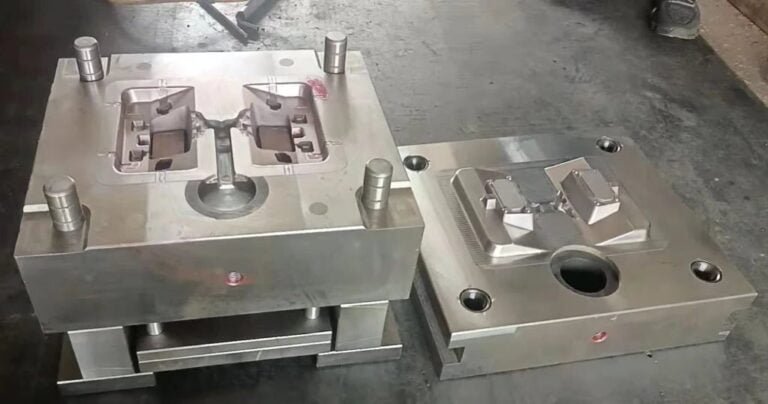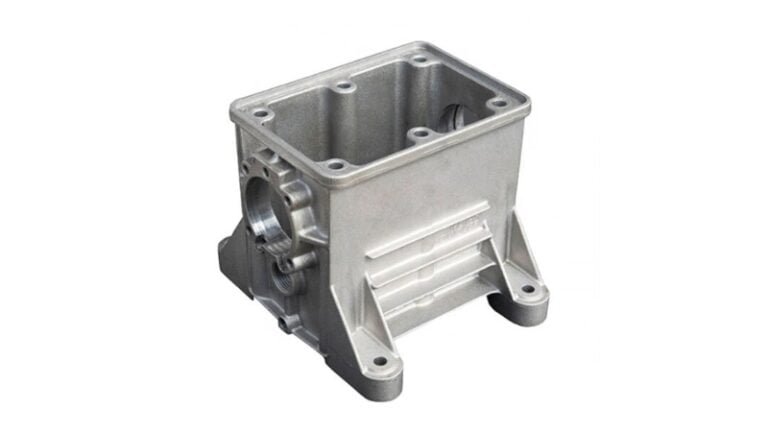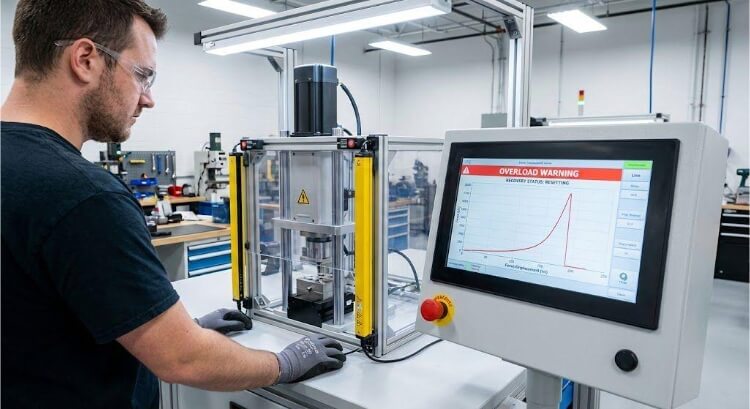Permanent mold casting is a reliable method for producing high-quality metal parts. Engineers and manufacturers choose it for its repeatability and cost-effectiveness. But how does it work, and when should you use it?
This process is ideal when you need better precision without the high costs of pressure die casting. Let’s look at how it works, what it offers, and when to use it.
What Is Permanent Mold Casting?
Permanent mold casting is a metal casting process using reusable steel or iron molds. Molten metal is poured into these molds under gravity or low pressure.
The mold is not destroyed after use. Instead, it is cooled, opened, and reused for the next casting cycle. This repeatability makes the process ideal for high consistency.
The process works best with non-ferrous metals like aluminum, magnesium, and copper alloys. These metals flow well and solidify cleanly in the permanent molds.
The Basic Principles of and Processes
The process begins by heating metal until it melts. Then, the molten metal is poured into a preheated mold made of iron or steel. This mold has the shape of the final part.
As the metal cools, it hardens into the shape of the mold cavity. Once solidified, the mold opens, and the finished part is removed.
Before the next cycle, the mold may be coated with a thin ceramic or graphite layer. This helps with part release and extends the life of the mold.
Materials Used in Permanent Mold Casting
Choosing the right metal affects the final part’s quality, strength, and performance. Some metals are better suited for permanent mold casting than others.
Common Metals and Alloys
Permanent mold casting works best with non-ferrous metals. These metals melt at lower temperatures and flow better into the mold. They also cool faster, which helps speed up production.
The most common choices are aluminum, magnesium, copper-based alloys, and zinc.
Aluminum and Magnesium Alloys
Aluminum alloys are the most widely used. They offer great strength, low weight, and corrosion resistance. They are easy to cast and provide a clean surface finish.
Magnesium alloys are even lighter than aluminum. They are often used in aerospace and electronics. These alloys provide good strength and stiffness for lightweight parts.
Both aluminum and magnesium solidify quickly. This makes them ideal for use in permanent molds.
Copper-Based Alloys
Copper-based alloys, like bronze and brass, are another strong option. These materials are tough and resist wear. They are often used for parts that face friction or pressure.
These alloys cast well in permanent molds. However, they require higher mold temperatures because they retain heat longer.
Zinc and Other Suitable Materials
Zinc alloys are dense, easy to cast, and have excellent surface detail. They work well for small parts where weight is not a concern.
Other metals like lead or tin can also be used in specific applications, though less common. These are usually for parts that need precise shapes but carry little mechanical load.
Graphite
Graphite is a viral material for permanent molds because of its high thermal conductivity. It can also withstand extreme temperatures. It has excellent lubricity and reduces the need for release agents.

Types of Permanent Mold Casting
Different casting types give different results. The right method depends on the part’s size, shape, and required properties.
Gravity Permanent Mold Casting
This is the most common method. Molten metal flows into the mold by gravity alone. No external force is applied.
It’s simple, cost-effective, and works well for parts that don’t need extreme precision. It produces strong, dense castings with fewer defects than sand casting.
Low-Pressure Permanent Mold Casting
Low air pressure pushes the molten metal into the mold in this method. The flow is smoother and more controlled than with gravity.
This reduces turbulence and gas entrapment. It creates cleaner, stronger parts with better surface finish and fewer porosity issues. This method is great for castings with complex shapes and thinner walls.
Vacuum Permanent Mold Casting
This technique uses a vacuum to draw the molten metal into the mold. It removes trapped gases and reduces defects.
It’s often used for high-performance parts in aerospace and automotive. The results are clean, detailed castings with tight tolerances. Vacuum casting also improves metal flow in thin or narrow mold sections.
Tilt-Pour Casting Process
In this method, the mold is tilted while pouring the metal. This controls the flow and reduces splashing.
The metal fills the mold cavity gradually and evenly. It lowers the chance of gas pockets or cold shuts. Tilt-pour casting is ideal for parts that require excellent integrity and consistent wall thickness.
Process Parameters
Controlling the casting process is key to getting high-quality parts. These factors affect strength, accuracy, and surface finish.
Pouring Temperature and Metal Flow
The metal must be poured at the right temperature. If it’s too hot, it can damage the mold or cause shrinkage defects. If it’s too cold, it might not fill the mold.
The metal should flow smoothly and fill the cavity before it starts to solidify. Good flow prevents air pockets and incomplete shapes. Flow speed also matters. Too fast can cause turbulence. Too slow can lead to cold shuts or gaps.
Cooling Rates and Solidification Time
Cooling speed changes the metal’s structure. Fast cooling makes the grain smaller, which boosts strength. Slow cooling may lead to larger grains and weaker parts.
Permanent molds cool the metal faster than sand molds. That’s why parts from this process are usually stronger and more precise. Solidification must be even. If one part cools faster than another, it can cause stress or cracks.
Mold Material Selection and Surface Finish
The mold is usually made from steel or cast iron. It must handle high heat and repeated use without warping or cracking.
The inside of the mold affects the part’s surface. A smooth mold gives a better finish. Coatings like graphite or ceramic help release the part and protect the mold.
Part Design Considerations
Good casting starts with smart design. Permanent mold casting has specific needs that affect how a part should be shaped.
Ideal Geometries for Permanent Mold Casting
Simple, symmetrical shapes work best. These shapes fill evenly and cool at a uniform rate.
Parts with smooth contours and rounded edges reduce the risk of air traps or weak spots. Avoid sharp corners and sudden changes in thickness.
Holes, bosses, and ribs are possible but should be designed carefully to avoid shrinkage or warping.
Wall Thickness and Draft Angles
The walls should be even in thickness. Uneven walls cool at different speeds, leading to cracks or internal stress.
A typical wall thickness range is between 3 mm and 6 mm. Very thin walls may not fill well. Very thick sections may cause shrinkage.
Add draft angles to help remove the part from the mold. A small draft, usually 1 to 3 degrees, can ease release without changing the part’s function.
Surface Finish Expectations
Permanent mold casting gives a better finish than sand casting. The surface is usually smoother and needs less machining.
However, the finish depends on the mold’s condition. A polished mold gives a polished part. Coatings also help reduce sticking and improve appearance.
Some minor marks or parting lines may still be present and may need light post-processing if a flawless look is needed.
Limitations in Design Flexibility
Permanent molds are rigid and don’t allow for complex undercuts or deep cavities without extra tools like cores.
Adding features after casting may be needed. Other methods, like investment casting, might be better for very detailed or variable designs.
Changing a mold takes time and cost. This method is best when making many parts from the same design.

Advantages of Permanent Mold Casting
Permanent mold casting offers clear benefits over other methods. Here’s why engineers and manufacturers rely on it.
Better Surface Finish and Dimensional Control
The steel or iron molds produce smoother surfaces than sand casting. Tighter tolerances mean less post-processing. This saves time and costs on finishing work.
Reusability of the Mold
Unlike sand molds, permanent molds can be used thousands of times. This makes them cost-effective for repeated production. Proper maintenance extends their lifespan further.
Shorter Cycle Time in Medium to High Volume Production
Once the mold is heated, cycles run quickly. There is no need to remake molds for each part. This speeds up production for batches of hundreds or thousands.
Stronger and Denser Castings
The rapid cooling in metal molds refines the grain structure. Parts end up with fewer voids and better mechanical properties. This is critical for high-stress applications.
Limitations and Challenges
While powerful, this method isn’t perfect for every project. Here’s where it falls short.
High Initial Tooling Cost
Steel or iron molds are expensive to machine. This makes small production runs less economical. The break-even point typically starts at medium volumes (500+ units).
Limited Suitability for Complex Geometries
Internal cavities or intricate designs are hard to achieve. Unlike sand casting, permanent molds struggle with deep pockets or thin, complex walls.
Restrictions on Alloy Types
High-melting-point alloys (like steel) can damage molds. It is best for aluminum, magnesium, or zinc. Iron molds also react with certain metals, causing defects.
Difficulty in Producing Undercuts
Permanent molds must open linearly. Undercuts require costly sliding cores or secondary machining. Simple, draft-friendly designs work best.
Permanent Mold Casting Compared with Other Methods
The casting method you choose depends on the requirements of your project. This is a comparison of permanent mold casting and some other common alternatives.
| Feature | Permanent Mold Casting | Sand Casting | Investment Casting | Die Casting |
|---|---|---|---|---|
| Part Complexity | Moderately complex | Highly complex | Very intricate | Highly complex |
| Production Volume | Medium volume | Low volume or prototypes | Low volume | High volume |
| Dimensional Accuracy | High | Moderate | Very high | Very high |
| Surface Finish | Smooth | Rough | Excellent | Excellent |
| Cost per Part | Lower for medium to high volume | Lower for low volume | Higher | Higher for high volume |
| Reusability of Mold | Reusable | Not reusable | Not reusable | Not reusable |
| Cycle Time | Faster | Slower | Slow | Very fast |
| Material Compatibility | Wider range | Limited | Limited | Wider range |
| Environmental Friendliness | More environmentally friendly | Less environmentally friendly | Less environmentally friendly | Less environmentally friendly |
Where Is Permanent Mold Casting Used?
This method shines in industries needing strong, repeatable metal parts. Let’s look at key examples.
Automotive Components
Engine pistons, wheel hubs, and transmission cases often use permanent mold casting. The process balances strength and cost for high-volume car parts.
Aerospace and Defense
Cargo fittings, drone housings, and radar components benefit from the method’s lightweight yet durable results. Consistency matters here, and permanent molds deliver.
Marine Hardware
Propeller housings, pump casings, and saltwater-resistant fixtures rely on this casting. Aluminum’s corrosion resistance pairs well with the process.
Electrical and Industrial Parts
Heat sinks, motor housings, and tooling frames are common. Thermal conductivity and precision make permanent mold casting a go-to choice.
Conclusion
Permanent mold casting is a solid choice for producing strong, high-quality metal parts in medium to high volumes. It offers a good surface finish, tight tolerances, and faster production cycles. This process works well with non-ferrous metals like aluminum, magnesium, copper, and zinc. It’s used across automotive and aerospace industries, offering reliable performance and cost savings.
Are you looking to improve your production quality and efficiency? Contact our team today to explore if permanent mold casting is the right fit for your next project.
Hey, I'm Kevin Lee

For the past 10 years, I’ve been immersed in various forms of sheet metal fabrication, sharing cool insights here from my experiences across diverse workshops.
Get in touch

Kevin Lee
I have over ten years of professional experience in sheet metal fabrication, specializing in laser cutting, bending, welding, and surface treatment techniques. As the Technical Director at Shengen, I am committed to solving complex manufacturing challenges and driving innovation and quality in each project.




